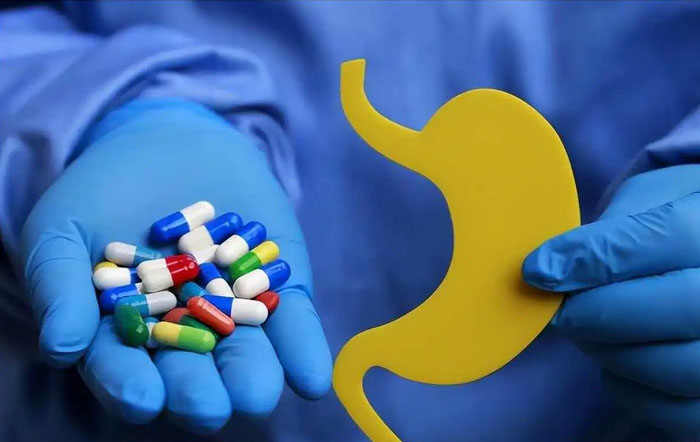- Login
- Cart{{shopingCartNum}}
- English

Trans fats are unsaturated fatty acids with at least one trans double bond in their molecular structure. Through the process of hydrogenation during food processing, liquid vegetable oils are converted into solid or semi-solid forms, thereby enhancing the stability and shelf life of food, while imparting an appealing texture and flavor.
Trans fats are primarily divided into two types: natural trans fats and artificial trans fats:
Natural trans fats: Found in beef, lamb, and dairy products, they are synthesized by microorganisms in the digestive systems of ruminant animals.
Artificial trans fats: Manufactured through industrial hydrogenation of vegetable oils, they are common additives in the food industry, used to extend shelf life and improve the texture of food.
1. Hydrogenated vegetable oil products: This is the primary source of trans fats, including margarine, vegetable shortening, coffee creamer, baking margarine, spreads, and frying oils. If a food label lists "hydrogenated oil" or "partially hydrogenated vegetable oil" as an ingredient, it likely contains trans fats.
2. Fried foods: Items such as French fries, fried chicken, fried fish, doughnuts, and pastries, where oils used for repeated frying at high temperatures can produce trans fats.
3. Fast food and convenience foods: Items like fast food burgers, fries, chicken nuggets, instant noodles, and frozen foods often use oils containing trans fats to enhance texture and extend shelf life.
4. Pastries and desserts: Cakes, cream puffs, doughnuts, puff pastry, cookies, and egg tarts may use ingredients such as shortening and artificial butter containing trans fats during preparation.
5. Ice cream and frozen desserts: Even certain flavors of premium ice cream brands may contain trans fats, such as those with added butter, walnuts, coffee, rum, or green tea flavors.
6. Dairy and meat products: While in relatively lower amounts, natural trans fats (ruminant trans fats) can be found in the fat of milk, dairy products, and beef or lamb.
7. Transformation during cooking: During home cooking, especially when frying or sautéing with vegetable oils at high temperatures, some cis fatty acids may transform into trans fats, although this conversion is typically minimal.
Some countries and regions have implemented strict regulations to limit the trans fat content in foods, encouraging consumers to opt for healthier alternatives, such as using non-hydrogenated vegetable oils for cooking, reducing the intake of processed foods, and increasing the consumption of fresh fruits, whole grains, and unprocessed foods to maintain cardiovascular health and overall well-being.

Trans fats elevate levels of low-density lipoprotein (LDL, commonly known as "bad" cholesterol) while reducing levels of high-density lipoprotein (HDL, commonly known as "good" cholesterol). These changes can lead to atherosclerosis, thereby increasing the risk of heart disease and stroke.
Trans fats promote the production of inflammatory factors in the body. Prolonged chronic inflammation is associated with various chronic diseases such as diabetes and arthritis.
Research indicates that excessive intake of trans fats may lead to insulin resistance, thereby increasing the risk of type 2 diabetes.
Trans fats affect the distribution of body fat, particularly the accumulation of abdominal fat, which is associated with an increased risk of metabolic syndrome and obesity-related diseases.
High intake of trans fats by pregnant women may affect fetal growth and development, increasing the risk of preterm birth or low birth weight. Additionally, children who consume high amounts of trans fats from an early age may also impact their long-term health.
Therefore, the World Health Organization (WHO) recommends minimizing the intake of trans fats in the diet, and many countries have taken measures to restrict the trans fat content in foods. For example, choosing natural, unrefined foods, avoiding the consumption of processed foods containing partially hydrogenated oils, and increasing the proportion of fresh fruits, whole grains, and unprocessed foods can help maintain health.

The dietary guidelines of the World Health Organization (WHO) and countries including China and the United States recommend that the energy supply of trans fats should be less than 1%. For an adult requiring 8400 kilojoules of energy intake per day, this is approximately equivalent to consuming 2.2 grams of trans fats.
According to survey data in China, the average daily intake of trans fats is 0.39 grams, equivalent to an energy supply ratio of 0.16%, far below the WHO's recommended value.
Therefore, as long as one does not consume large amounts of trans fat-containing foods, the health risk is very low.

Faced with this "invisible assassin" at the dining table, we are not without options. By mastering the following points, you can enjoy delicious food while safeguarding your health:
1. Read food labels: When purchasing processed foods, carefully check the nutrition facts panel for indications of "partially hydrogenated oil," "shortening," or "vegetable shortening," as these are synonyms for trans fats.
2. Choose natural foods: Try to consume more fresh vegetables, fruits, whole grains, lean meats, and fish, which naturally do not contain trans fats and are minimally processed.
3. Choice of cooking methods: Use non-hydrogenated vegetable oils like olive oil or peanut oil for cooking, reduce the intake of fried foods, and opt for healthier cooking methods such as baking, steaming, or grilling.
4. Pay attention to "0 trans fat" claims: Even if a product label states "0 trans fat," it does not mean there are none at all. According to Chinese standards, a product can be labeled as "zero trans fat" if the trans fat content is less than 0.3 grams per 100 grams of food. Therefore, even for these types of foods, moderate consumption is still advised.